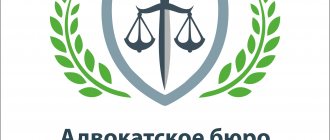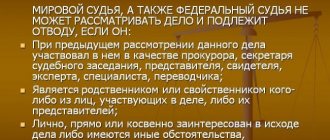The theory of combating corporate fraud
In the theory of classification of corporate fraud and the fight against it, the works of such researchers as K. Schipper, K. Marchand, J. T. Wells, J. M. Zak, J. L. Kovasich are considered the main ones. Their work is based on almost two centuries of practice in combating the unlawful creation of joint stock companies, “soap bubbles,” and distortion of reporting. Russian corporate governance standards are much younger, so the scientific classification of types of corporate fraud is complicated from both practical and theoretical points of view.
The Ministry of Finance of the Russian Federation has developed recommendations for carrying out a legitimate assessment of the risk of all abuses associated with the acquisition of new assets, maintaining accounting records, and performing certain actions that may be caused by commercial bribery. The classification of the Ministry of Finance of the Russian Federation largely coincides with the classification proposed by the Association of Certified Fraud Examiners (ACFE). Both the regulator and the international research organization identify three types of fraud:
- corporate corruption;
- reporting fraud;
- misappropriation of assets.
The harm of corporate fraud for a company and society is manifested in various types of damage , financial and non-financial:
- damage caused to the company's business reputation, often negatively affecting the capitalization of its shares;
- reduction in product quality due to a hidden reduction in the cost of components and the quality of work as a result of appropriation of part of the funds allocated for the formation of costs;
- deterioration and loss of business ties with partners who prefer to refuse to work with a company whose business reputation has decreased as a result of the discovery of facts of corporate fraud;
- a significant decrease in the efficiency and profitability of activities;
- reduction in the growth rate of the entire business and its individual areas;
- decreased competitiveness;
- deterioration of relationships in the team, creation of an atmosphere of suspicion;
- deterioration in creditworthiness and attractiveness to investors;
- direct loss of assets.
All these negative phenomena arise due to the extremely low quality of corporate governance in Russian companies, the lack of working codes of corporate ethics, and internal control systems. In most cases in Russia, crimes that can be characterized as corporate fraud are committed by senior personnel and top management. Abroad, such offenses are committed by middle and lower level personnel. Countering corporate fraud committed by the top management of private companies is often possible only on the part of minority shareholders, who often involve law enforcement agencies to identify such facts or use judicial mechanisms of corporate control.
Researchers of the Russian practice of fraudulent actions note that the most developed crime in our country is misappropriation of assets, which can be expressed in the form of theft, embezzlement, or embezzlement. It accounts for more than 70% of all criminal incidents. Less common and less detectable are reporting fraud, both financial and accounting documents of individual legal entities, and with consolidated documentation of a group of persons, within which corporate fraud and the withdrawal of assets often occur. Thus, the transfer of assets within a group of persons may not be recognized as an interested party transaction or a major transaction, but it is precisely such transfers of assets or undervaluation of their value that make it possible to deprive minority shareholders of their share of the profits from the company's activities.
Examples
Examples of fraud within enterprises:
- The employee responsible for concluding transactions with customers, on the eve of signing the contract, transfers information about the subject of the agreement, the amount of the contract and the proposed conditions to a competing company, which at the last moment rejects the client. The employee receives a percentage of the competitor's contract amount.
- The metal-working machine was sold and registered as scrap metal. The machine was cleaned, lubricated, painted, new technical documentation was issued for it and sold back to the production plant with a 60% markup.
- Increasing the wage fund while simultaneously reducing staff.
- Inclusion of “dead souls” in the statements for payment of funds.
- Organizing the purchase of a consignment of goods at prices above market prices.
Main causes of corporate fraud
If we talk about the reasons for committing this type of fraudulent actions, we can distinguish three main groups:
- agency conflict between the owner and top management;
- the desire of the majority shareholder to deprive the minority shareholders of their shares of profit;
- misleading banks and investors by distorting financial statements and embezzlement of funds in order to misappropriate loans and investments.
Agency conflict, as one of the main causes of corporate fraud, often arises as a consequence of shareholders’ failure to fulfill their obligations to motivate the manager’s activities. The feeling of wounded pride leads to the withdrawal of assets and the concealment of profits. The second interesting reason for the agency conflict is the low quality of corporate management of blocks of shares owned by the Federal Property Management Agency. At such enterprises, corporate control is often absent altogether, which leads to numerous controlled bankruptcies, misappropriation of assets, and other fraudulent activities.
The task of regular management, designed to completely eliminate agency conflict and corporate fraud as its consequence, is solved with the involvement of significant resources.
Ways to eliminate agency conflict
Shareholders, when building a system of corporate control, must consider it on several levels at once.
Changing the provisions of charters, regulations on the Board of Directors, and other corporate documents, which sharply narrows the powers of top management, should become one of the main practices for preventing corporate fraud. The law provides a wide range of opportunities for such adjustments of documents, and it should not be neglected. The changes will help stop the registration of a real estate transaction and recover damages from the director or his deputy caused to the company by his unlawful actions, fraud, deception or breach of trust.
The second way to combat agency conflict will be the widespread use of external audit capabilities. Despite the fact that audit companies are selected by meetings of shareholders or participants, they very often become conductors of the interests of management, deliberately carrying out checks in order not to detect distortions in the reporting. Timely replacement of such companies and assignment of individual technical tasks to them with an emphasis on possible shadow and risk areas will help strengthen control over the activities of managers.
"Portrait" of a fraudster
The techniques used by the scammers are not acceptable for ordinary theft.
The fraudster misleads his “victim”; he can use bait, for example, he offers more favorable terms under the contract or underestimates the cost of the products offered. The criminal presents information to the victim only that which is beneficial to him. Often scammers try to provoke emotions in the victim, make him worry and even afraid. For example, one of the latest mobile scams is when they call parents or close friends and claim that their child or other family member has been taken into police custody and demand a ransom for his release. That is, an imaginary type of threat is created.
Fraudsters can promise a lot, they never argue with the victim.
We invite you to read: Personal income tax in 2022. Income tax on wages (income) of individuals
And a purely psychological point, unlike an ordinary thief, scammers are always well dressed, speak well, can make an impression and often master techniques of psychological influence. As a rule, it takes a lot of time to prepare for fraud, especially if we are talking about a large sum.
Corporate ways
Corporate control methods also include the creation of services such as:
- economic security service;
- internal audit service;
- KRU (control and audit department).
Although these units are aimed at detecting corporate fraud, they are often ineffective, especially when the violation is initiated by the controlling shareholder. They can become an effective tool for identifying violations by employees, but in most cases they will not interfere with the activities of top management and shareholders. The solution to the problem will be the subordination of internal control services to those committees of the Board of Directors in which independent directors are present.
The board of directors, if it is a working body and independent directors participate in it, will help to minimize the risks of agency conflict and reduce the influence of controlling shareholders. It must include independent directors who are not associated with any of the shareholders, and its activities must be carried out on an ongoing basis. The board must agree on all relevant documents, from the procurement plan to the investment policy.
It is necessary to create committees within the Council that will help resolve emerging conflicts:
- the remuneration committee will reduce the problem of unpaid bonuses and internal conflicts;
- The audit committee will ensure that a truly independent audit of the company's activities is carried out.
The costs of organizing the work of a Board of Directors formed in this way may be high, but they are always justified. We also must not forget that a number of important powers are granted by law to such a body as the Audit Commission.
What is the difference between a bribe and bribery?
Concepts such as “bribe” and “bribery” cannot be equated. Liability for bribery is provided for in Article 204 of the Criminal Code. In the public sphere, they use the concept of “bribe.” Bribery is typical in the commercial sphere. The person involved in the bribe is a civil servant, and the person involved in the bribe is a businessman or individual entrepreneur.
A bribe falls within the scope of official crimes. Bribery is characterized by a commercial sphere of activity. A bribe can be given both before and after performing certain actions. Bribery is always present only before performing any actions.
Article 290 of the Criminal Code of the Russian Federation provides for various punishments, which depend on many circumstances. For example, the size of the bribe matters. The punishment under Article 290 of the Criminal Code is cumulative. For example, you can receive a fine and at the same time real imprisonment. The maximum fine can be 5 million rubles. The maximum term of imprisonment is 15 years.
Important! A civil servant is prohibited from accepting gifts whose value exceeds 3 thousand rubles.
Functions of a bribe lawyer
A lawyer representing a client in bribery cases performs the following functions:
- The lawyer chooses a certain tactic of action.
- The lawyer is looking for investigative errors that will help ruin the case.
- The lawyer collects facts confirming the client’s innocence.
- The lawyer is able to prove that the client had no intent to commit an offense.
- The lawyer collects documents characterizing the client from the positive side.
- The lawyer collects data on the basis of which the article can be reclassified.
- At the same time, a search for mitigating circumstances is carried out.
- The lawyer collects evidence to dismiss the case. Or he defends the client during legal proceedings.
The case can be dismissed due to the expiration of the statute of limitations, there is active repentance, or the investigation was unable to fully collect all the evidence of guilt.
In addition, the lawyer makes a request to order various examinations and investigative measures that can change the situation of his client. The lawyer tells the client what tactics he needs to choose. In addition, when collecting evidence, the lawyer conducts an independent investigation. He is looking for evidence to reclassify the article.
After the court makes a guilty verdict, the lawyer files an appeal. If the court passes a sentence with a real term of imprisonment, the lawyer takes steps towards the possibility of releasing the client on parole.
Staff motivation
Any stakeholder in relation to the system, in this case to the corporation, aims at a fair and balanced ratio of the forces given and the profit received from it. If a top manager sees that his activities bring the company a significantly larger influx of income than his motivation, it is expected to decrease, which, in the absence of well-functioning corporate procedures, can lead to facts of corporate fraud. Therefore, the company must have an objective motivation system that clearly evaluates labor contribution and remuneration for it, but, on the other hand, implies prompt and inevitable punishment for any action that causes damage to the company. However, disciplinary measures alone are not enough. If an audit or audit commission reveals signs of fraud, it is necessary to involve law enforcement agencies.
In addition to external auditors, software products that can help identify cases of collusion, malicious theft of information, and violation of trade secrets will help identify such cases. Among such products, it is recommended to use modern programs that make it possible to protect the company’s information perimeter from unauthorized actions of stakeholders, leaks, unauthorized copying or transfer of data. Such tools include DLP systems and SIEM systems. The former are configured in such a way as to completely eliminate the theft of information by internal users, the latter detect and identify various information security incidents, allowing for complete risk management and providing protection against penetrations through the external security perimeter.
Responsibility for their application must be borne by economic and information security services, whose remuneration should depend on their ability to identify and suppress cases of corporate fraud.
Criteria for choosing a lawyer
Only an experienced professional lawyer can understand complex cases related to fraud. A lawyer must have knowledge of Internet technologies that are used to deceive citizens. You must select a lawyer based on the following criteria:
- Experience in handling similar cases.
- Number of cases with a positive outcome.
- The nature of the main legal specialization.
You should only seek help from a professional lawyer. No self-respecting professional lawyer will give a 100% guarantee. Anyone who promises unconditional victory is most likely a banal deceiver.
Such lawyers are not cheap, which is determined by many factors. But saving on this is not advisable. During the trial, new circumstances may be revealed.
What are the responsibilities of a fraud lawyer?
In order to solve the client's problems, the lawyer determines the following goals:
- Constant conversations with the client, no matter where he is.
- Legal advice regarding the investigation. By talking with the client and asking him a few questions, the lawyer can determine whether there is a possibility of winning the case. At this stage, the lawyer does not need to delve into the details of the case.
- The lawyer prepares materials that will be required at the court hearing.
- A lawyer is present at every court hearing, building a line of defense for the client.
- If necessary, prepares materials for appealing a court decision.
Fraud cases are quite complicated, so the participation of a lawyer is mandatory. Anyone who believes in advance that the case will be lost is doing wrong. We must fight for victory. It is impossible to predict the outcome of a case until the last moment.
Sometimes already during the trial, the accused is charged with another article. A lawyer can help you avoid this. Even before the trial, the lawyer will discuss all possible positions with the client. The accused, for example, may completely deny his guilt. In another option, the lawyer can achieve a mitigation of the punishment. At the same time, he presents to the court evidence that will reduce the sentence.
Of course, the lawyer must be competent and have extensive experience in handling such cases. The lawyer can accompany the client after the verdict is passed. If the accused receives a real sentence, the lawyer can achieve his release from prison on parole.
Combating manipulation of reporting
This type of corporate offense is often used by both controlling shareholders and middle managers, whose interests include inflating indicators: sales, revenue, net profit and capitalization of the company's shares.
Such distorted reporting is not always detected immediately, including by the tax authorities, but usually causes significant damage to the company and its minority shareholders. It should be understood that distortions are most easily introduced not into financial reporting, the rules for the preparation of which are strictly regulated by Russian accounting standards, but into reporting under IFRS, which is provided to banks and investors. The obligation to prepare such reports is assigned by law to large joint-stock companies; banks; insurance companies and a number of other market entities.
But very often, in order to obtain an investment or loan, the borrower is asked to prepare and submit reports prepared in accordance with these standards. And here a problem arises due to the fact that IFRS presupposes the use of concepts such as fair value and the priority of economic substance over form. The problem arises due to the lack of clear evaluation criteria; various methods and ranges are possible; this logically leads to subjective distortions being introduced into the reporting. In the presence of premeditated intent and large limits of distortion, they take the form of corporate fraud.
Bibliography
- Tokmantsev D.V. On the issue of methods of theft of narcotic drugs or psychotropic substances // Criminal law. 2015. No. 2. P. 75.
- Sidorova A.V. Objective signs of theft // Bulletin of Chelyabinsk State University. – 2013. – No. 11 P. 106
- Vorontsova S.V. On the issue of qualification of crimes in the field of electronic payments // Banking Law, 2009, N 1
- Verdict of the Norilsk City Court of the Krasnoyarsk Territory dated July 31, 2017. Case No. 1-265/2017 https://judicial decisions.rf/28544196/extended
- Verdict of the Sovetsky District Court of Krasnoyarsk dated February 7, 2018 Case No. 1-94/2018 https://judicial decisions.rf/33117136/extended
- Tokmantsev D.V. On the issue of methods of theft of narcotic drugs or psychotropic substances // Criminal law. 2015. No. 2. P. 75.
Methods of corporate fraud
Thus, when studying the causes, subjects and types of offenses committed, one can clearly build the following classification:
- fraudulent actions with assets, which include their illegal sale as a result of uncoordinated transactions, writing off assets from the company’s balance sheet, underestimating the value of assets, replacing valuable assets with less valuable ones;
- withdrawal of proceeds to companies specially created for these purposes, subsidiaries, dependents or so-called “technical” ones; in foreign practice they are called special purpose entities. This entails a decrease in revenue, an unjustified increase in expenses, a decrease in profits, and the occurrence of losses. This type of fraud is most often used to reduce the income of minority shareholders, and its key example in Russia was the case;
- burdening the company with obligations. This leads not only to their growth, but the ultimate goal of such actions is often controlled bankruptcy with further withdrawal of assets;
- reporting fraud leads to changes in the true value of assets and the size of liabilities, both receivables and creditors.
Risk factors
When analyzing a company’s work in order to identify possible risks of corporate fraud, researchers recognize the following types:
- low level of control over the activities of company executives by top management, which is unable to identify the risk of fraud. The scope of authority of managers is not limited in any way, it is not balanced by their restrictions and control;
- management motivation based on increasing the company's capitalization. It is this that leads to the majority of violations associated with distortions in financial statements;
- a large share of transactions made with related and dependent companies. This clearly indicates manipulation of the amount of expenses and revenue, as well as the transfer of losses to subsidiaries, which leads to an overestimation of the financial indicators of the parent;
- frequent change of suppliers and buyers. This indicates not only the lack of a stable positioning in the market, but also that the company uses technical firms, specially created for this purpose and quickly liquidated, to increase costs and reduce income;
- a complex business structure in which operating companies operate separately from asset holders; additionally, trading houses, outsourcing and consulting firms are created. This will clearly indicate the risks of manipulation with taxes and revenue.
An experienced expert, conducting a business audit, will be able to identify most risk areas by conducting his own classification of the methods of corporate fraud used. Based on this data, an investor or banker will be able to make an informed decision about the possibility of lending to such a business.




